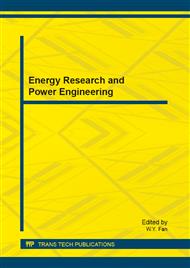p.162
p.166
p.171
p.175
p.179
p.183
p.187
p.191
p.195
A Detection Method for Grinding Surface Residual Stresses on Nanostructured Ceramic Coatings
Abstract:
The surface of the nanostructured ceramic coatings after grinding appears cracks, these cracks will reduce components intensity, and the cause of these cracks is grinding surface residual stress. The surface residual stress makes the distance change regularly with crystal orientation and stress changing on the cognate crystal plane of different crystal grain, therefore the X ray diffraction line offset, according to the size of the offseted position, the residual stress can be calculated by using σ = K • M.
Info:
Periodical:
Pages:
179-182
Citation:
Online since:
July 2013
Authors:
Price:
Сopyright:
© 2013 Trans Tech Publications Ltd. All Rights Reserved
Share:
Citation:


